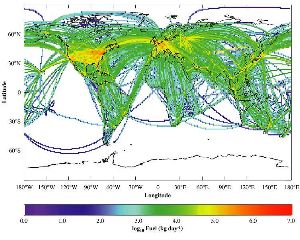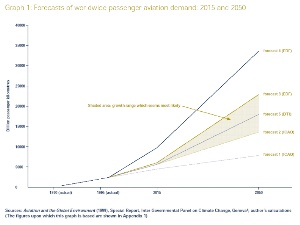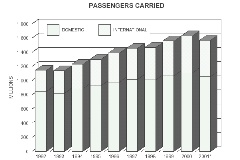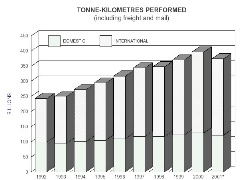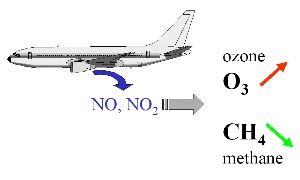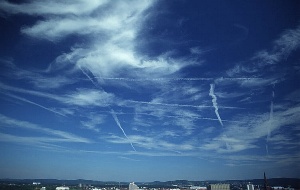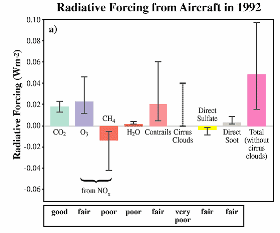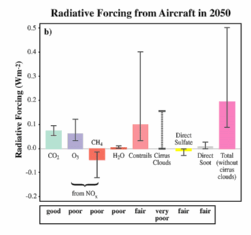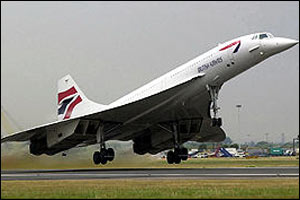 > English > Climate Encyclopaedia > Upper Atmosphere > more > 1. Dynamics & Aviation > - Aviation
> English > Climate Encyclopaedia > Upper Atmosphere > more > 1. Dynamics & Aviation > - Aviation
|
Upper AtmosphereRead more |
Aviation today and tomorrowIt's not easy to estimate the impact of aviation on our climate today and even more difficult to determine what effect it will have in the future. Up until recently, the aviation industry had little impact on the climate system but, as it is an extremely fast growing energy consumer, it is assumed that air transport will be an important factor governing climate in the future.
|
In 2002, the global revenue per passenger decreased by 4%, freight by about 8%. In parallel, Europe saw a rapid increase in low budget flights and increases in this market are predicted for the future. Over the next 20 years it is assumed that a 5% growth in passenger numbers will be seen each year globally. Aviation forecastsMany publications measure air traffic in revenue per passenger kilometre (RPK = number of passengers multiplied by the distance flown by the passengers per year). This number grew by 360% from 1970 (551 billion) to 1995 (2,537 billion). Estimates for the future vary.
|
|
|
For 2015 some predictions suggest a RPK value of 5,700 billion, for 2050 a likely range could be 14,000 to 23,000 billions (ICAO / EDF forecasts for medium economic growth). Assuming a world population of about 10 billion in 2050 this means that the average Earth’s citizen will travel between 1,400 and 2,300 kilometers per year by aeroplane. Aviation makes up about 2% of all carbon dioxide emissions from man-made sources today. The contribution to the radiative forcing was estimated to be 3.5% in 1992. This is not a lot. But if the current RPK value multiplies over the next few decades, air traffic will become an increasingly important factor, contributing 10% or more of the human induced global warming in 2050.
|
|
|
The climate impact:Aeroplanes emit gases and particles directly into the upper troposphere and the lower stratosphere. They alter the concentration of atmospheric greenhouse gases, including carbon dioxide (CO2), ozone (O3) and methane (CH4). They also trigger the formation of condensation trails (contrails) and may increase cirrus cloudiness. All these factors contribute to climate change.
|
Gas phase processesAs with most other energy consuming processes, aeroplane engines consume fossil fuels and therefore produce CO2 (about 2% of all anthropogenic CO2). Moreover, jet engines also produce nitrogen oxides. These have two major impacts on the upper atmosphere: They form ozone and they destroy methane.
|
Since the life time of ozone is short, ozone formation is a temporary local process. In 1992 ozone levels were about 6% higher in flight corridors compared to regions without aviation. In 2050, ozone levels could be 12% higher. Methane depletion (about -2% in 1992 and predicted to be -5% in 2050) is spread more evenly across the globe. Both ozone and methane are greenhouse gases and, on a global scale, the opposing effects of ozone increase and methane loss on global warming nearly cancel each out. However, on a local scale, a warming by ozone formation in the flight corridors (which are mainly in the Northern hemisphere), overwhelms the global cooling caused by methane depletion.
|
|
|
Water vapour, contrails and cirrus cloudsAeroplanes emit their exhaust gases into the cold region of the atmosphere, near the tropopause between the troposphere and the stratosphere. Since cold air cannot hold much water vapour, the water vapour emitted by the planes easily condenses to form a very narrow cloud known as a condensation trail (contrail). These are similar to ice clouds and can grow into cirrus clouds. These long narrow clouds can cover up to 5% of the sky in flight corridors over Europe and the USA. Globally, contrails are estimated to cover 0.1% of the sky and this value is predicted to increase to 0.5% by 2050. If the contrails grow into cirrus clouds they have a greenhouse effect - they let solar radiation into the Earth's atmosphere but absorb infra-red radiation coming from the Earth. Soot and sulphate emissions may allow condensation of extra cirrus cloud and add to this effect.
|
Level of understandingThe following diagram shows the different ways in which aviation contributes to radiative forcing (as a measure for global warming). The scientific understanding of these impacts ranges from poor to good depending on the impact. From the diagram it becomes obvious that estimates of the impact of air traffic on climate still have a high degree of uncertainty and that predictions of the future impact of aviation on our climate are, therefore, also very unsure.
|
|
|
Supersonic air transportAt higher altitudes, emissions of nitrogen oxides lead to decreases in the stratospheric ozone layer. This is one reason why supersonic passenger air transport has never really developed. Emissions into the stratosphere spread around the globe and we don't know the likely consequences of this on the atmospheric system and the ozone layer. Concorde, which had her maiden flight in 1969 and flew at an altitude of 18 km in the stratosphere, was the only regularly used commercial supersonic passenger jet. It had its last flight in 2003.
|
|
About this page:author: Dr. Elmar Uherek - Max Planck Institute for Chemistry, Mainz, Germany
|


